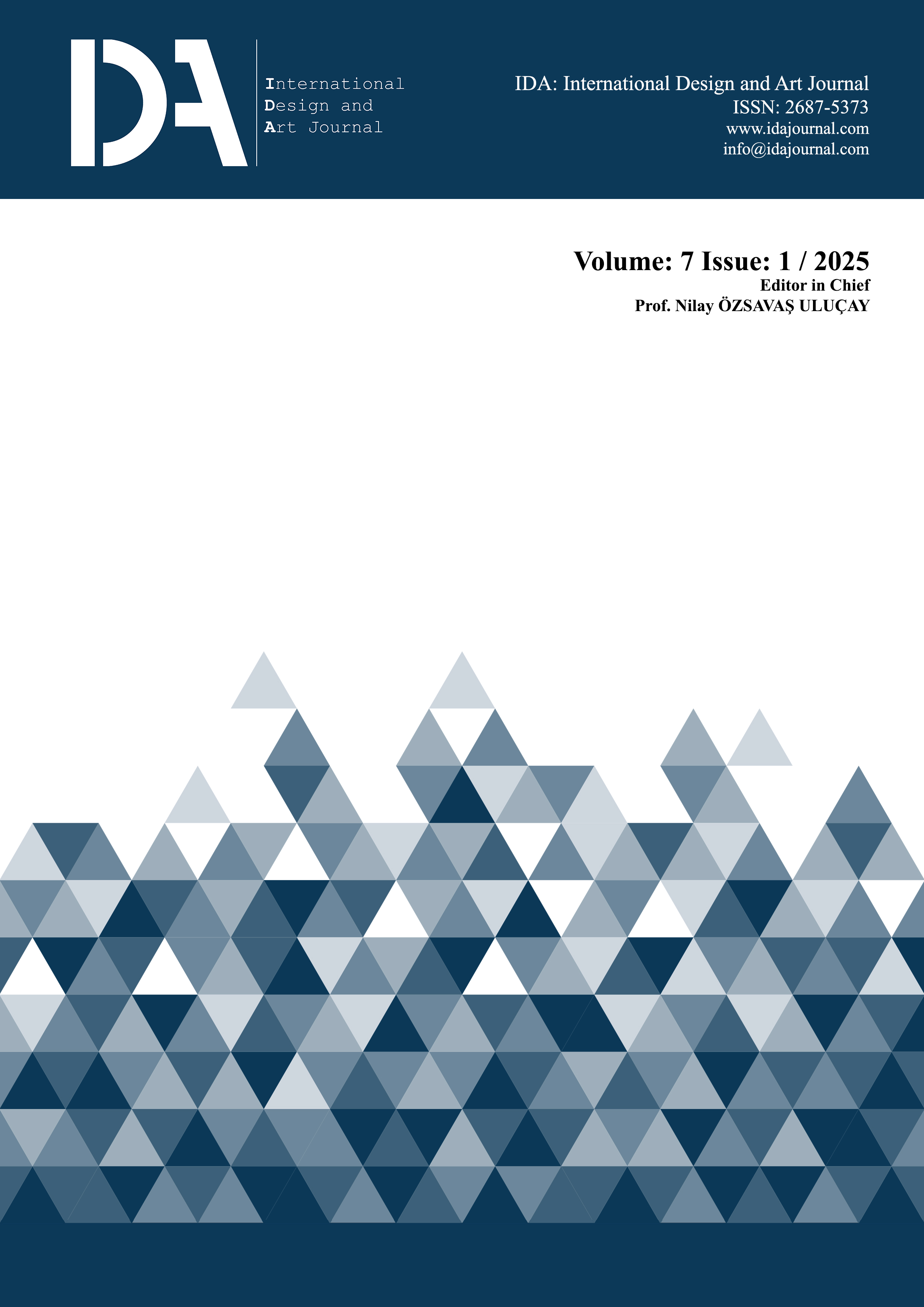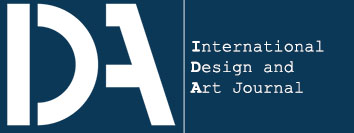A bibliometric review of architectural studies in the field of tourism
Keywords:
Architecture, Tourism, Relationship between tourism and architecture, Bibliometrics, Web of Science, VOSviewerAbstract
Architecture is an essential field of study that affects many aspects of tourism, such as accommodation, infrastructure, and recreation. In particular, it is an indispensable discipline for tourism as it is an attractive element that affects tourists’ perception of space and environment. The strong influence of architecture in tourism has also been reflected in academia over the past 25 years, and the impact and importance of architecture in international tourism destinations have been discussed in many countries. In light of the importance of tourism architecture and the recent academic developments, this study conducted a bibliometric analysis to provide an overview of the development trends in architectural studies within tourism. Between 2000 and March 2024, only articles written in English were included in the study, and the Web of Science Core Collection database was used to obtain data. The VOSviewer package was used to analyze the data of 136 articles. As a result of the analysis, it was found that there was an irregularity in the frequency of studies in the related field over the years. It was also found that studies on architecture in tourism are concentrated in different research fields such as ecology, architecture, environmental sciences, and rural studies. The study concludes with evaluations of the related field and suggestions for future research.
References
Amanullah, K., & Qudusi, S. A. (2024). The review of the architectural language of sustainable tourism. International Research Journal of Social Sciences and Humanities, 3(1), 236-244.
Aria, M., & Cuccurullo, C. (2017). Bibliometrix: An R-tool for comprehensive science mapping analysis. Journal of Informetrics, 11(4), 959-975.
Bae, S. Y., & Chang, P. J. (2021). The effect of coronavirus disease-19 (COVID-19) risk perception on behavioral intention towards ‘untact’ tourism in South Korea during the first wave of the pandemic (March 2020). Current Issues in Tourism, 24(7), 1017-1035.
Börner, K., Chen, C., & Boyack, K. W. (2003). Visualizing knowledge domains. Annual Review of Information Science and Technology, 37(1), 179-255.
Cavalcante, W. Q. D. F., Coelho, A., & Bairrada, C. M. (2021). Sustainability and tourism marketing: a bibliometric analysis of publications between 1997 and 2020 using VOS viewer software. Sustainability, 13(9), 4987.
Cheng, X., Guo, H., Zhang, Y., Wu, X., & Liu, Y. (2017). Non-photochemical production of singlet oxygen via activation of persulfate by carbon nanotubes. Water research, 113, 80-88.
Cobo, M. J., Lopez-Herrera, A. G., Herrera-Viedma, E., & Herrera, F. (2011). Science mapping software tools: Review, analysis, and cooperative study among tools. Journal of the American Society for Information Science and Technology, 62(7), 1382-1402.
Das, A., Kondasani, R. K., Deb, R. (2024). Religious tourism: A bibliometric and network analysis. Tourism Review, 79(3), 622-634.
Datzira-Masip, J., & Poluzzi, A. (2014). Brand architecture management: The case of four tourist destinations in Catalonia. Journal of Destination Marketing & Management, 3(1), 48-58.
Demir, H., & Erigüç, G. (2018). Bibliyometrik bir analiz ile yönetim düşünce sisteminin incelenmesi. İş ve İnsan Dergisi, 5(2), 91-114. https://doi.org/10.18394/iid.395214
Dolnicar, S. (2020). Designing for more environmentally friendly tourism. Annals of Tourism Research, 84, 102933.
Donthu, N., Kumar Badhotiya, G., Kumar, S., Soni, G. & Pandey, N. (2021). A retrospective overview of journal of enterprise information management using bibliometric analysis. Journal of Enterprise Information Management, 35(2), 504-529.
Erdoğan, N., & Barış, E. (2007). Environmental protection programs and conservation practices of hotels in Ankara, Turkey. Tourism management, 28(2), 604-614.
Farsani, N. T., Shafiei, Z., Adilinasab, A., & Taheri, S. (2017). An investigation of tourists’ attitudes towards promoting music niche tourism (Case study: Isfahan, Iran). Tourism Management Perspectives, 24, 1-6.
Fuchs, M., Höpken, W., & Lexhagen, M. (2014). Big data analytics for knowledge generation in tourism destinations–A case from Sweden. Journal of destination marketing & management, 3(4), 198-209.
Gao, X., & Guan, J. (2009). Networks of scientific journals: An exploration of Chinese patent data. Scientometrics, 80(1), 283-302.
Glänzel, W. (2001). National characteristics in international scientific co-authorship relations. Scientometrics, 51(1), 69-115.
Gürler, G. (2021). Bibliyometrik araştırmalarda ilgili literatüre ilişkin veri setinin oluşturulma süreci. O. Öztürk and G. Gürler (Eds). In Bir literatür incelemesi aracı olarak bibliyometrik analiz (p.53-66). Nobel Akademik Yayıncılık.
Heide, M., Lærdal, K., & Grønhaug, K. (2007). The design and management of ambience—Implications for hotel architecture and service. Tourism Management, 28(5), 1315-1325.
Izadi Najafabadi, F., Torabi Farsani, N., Saghafi, M. R., & Mansouri Roudkoli, S. (2019). Key components for organizing architectural tours in Isfahan, Iran. Journal of Quality Assurance in Hospitality & Tourism, 20(3), 259-272.
Jendritzky, G., de Dear, R., & Havenith, G. (2012). UTCI-why another thermal index? International journal of biometeorology, 56, 421-428.
Jiménez-García, M., Ruiz-Chico, J., Peña-Sánchez, A. R., & López-Sánchez, J. A. (2020). A bibliometric analysis of sports tourism and sustainability (2002–2019). Sustainability, 12(7), 2840. https://doi.org/10.3390/su12072840
Kammerer, K., Göster, M., Reichert, M., Pryss, R. (2021). Ambalytics: Scalable and distributed system architecture concept for bibliometric network analyses. Future Internet, 13, 203. https://doi.org/10.3390/fi13080203
Karaoğlu, G., İnceoğlu, M. (2021). Bilbao etkisi üzerinden bina bilgi modellemesini okumak. Mimarlık ve Yaşam Dergisi, 6(3), 779-791.
Leung, X. Y., Sun, J., Bai, B. (2017). Bibliometrics of social media research: A co-citation and co-word analysis. International Journal of Hospitality Management, 66, 35-45. http://dx.doi.org/10.1016/j.ijhm.2017.06.012
Liang, J., Crowther, T. W., Picard, N., Wiser, S., Zhou, M., Alberti, G., ... & Reich, P. B. (2016). Positive biodiversity-productivity relationship predominant in global forests. Science, 354(6309), aaf8957.
Mariani, M. M., & Giorgio, L. (2017). The “Pink Night” festival revisited: Meta-events and the role of destination partnerships in staging event tourism. Annals of Tourism Research, 62, 89-109.
Martínez-López, F. J., Merigó, J. M., Valenzuela-Fernández, L., & Nicolás, C. (2018). Fifty years of the European Journal of Marketing: A bibliometric analysis. European Journal of Marketing, 52(1/2), 439-468.
McCain, K. W. (1991). Mapping economics through the journal literature: An experiment in journal cocitation analysis. Journal of the American Society for Information Science, 42(4), 290.
Meena, A. K., D’Costa, D., Bhavsar, S., Kshirsagar, M., & Kulkarni, S. (2021). Applications of biomimicry in construction and architecture: A bibliometric analysis. Library Philosophy and Practice. Lincoln.
Musterd, S., Marcińczak, S., Van Ham, M., & Tammaru, T. (2017). Socioeconomic segregation in European capital cities. Increasing separation between poor and rich. Urban geography, 38(7), 1062-1083.
Nova-Reyes, A., Munoz-Leiva, F., & Luque-Martinez, T. (2020). The tipping point in the status of socially responsible consumer behavior research? A bibliometric analysis. Sustainability, 12(8), 3141.
Odetaye, A. S., Bashiru, A., & Bolaji, J. O. (2017). A review of the role of architecture in tourism industry development in Nigeria. Journal of Environmental Sciences and Resources Management, 9(2), 53-67.
Öztürk, O., & Gürler, G. (2022). Bibliyometrik araştırmaların tasarımına ilişkin bir çerçeve. In Bir literatür incelemesi aracı olarak bibliyometrik analiz (p. 33-48). Nobel Akademik Yayıncılık.
Park, E. J., & Lee, S. (2022). Creative thinking in the architecture design studio: Bibliometric analysis and literature review. Buildings, 12(6), 828.
Peters, H., & Van Raan, A. (1991). Structuring scientific activities by co-author analysis: An expercise on a university faculty level. Scientometrics, 20(1), 235-255.
Ruhanen, L., Weiler, B., Moyle, B. & McLennan, C. (2015) Trends and patterns in sustainable tourism research: A 25-year bibliometric analysis. Journal of Sustainable Tourism, 23(4), 517-535.
Scerri, M., Edwards, D., & Foley, C. (2019). Design, architecture and the value to tourism. Tourism Economics, 25(5), 695-710.
Small, H. G., & Koenig, M. E. (1977). Journal clustering using a bibliographic coupling method. Information Processing & Management, 13(5), 277-288.
Sofield, T., Guia, J., & Specht, J. (2017). Organic ‘folkloric’ community driven place-making and tourism. Tourism Management, 61, 1-22.
Specht, J. (2014). Architectural tourism building for urban travel destinations. Springer Gabler.
Şamlıoğlu, T. (2021). Mimarlık ve turizm. In Turizmde disiplinlerarası yaklaşımlar (Karacaer, S., Sert, A. S., Eds.), 187-198. Detay Yayıncılık.
Şimşek, A., & Küçükeşmen, E. (2021). Web of Science verı̇ tabanında analı̇tı̇k hı̇yerarşı̇ prosesı̇yle ilgı̇lı̇ yayınların bı̇blı̇yometrı̇k analı̇zı̇. Bilge Uluslararası Sosyal Araştırmalar Dergisi, 5(2), 148-162. https://doi.org/10.47257/busad.1040086
Tolay, E., & Güleryüz, Ö. (2022). Yönetim alanındaki örgütsel dayanıklılık makalelerinin bibliyometrik analizi. İşletme Araştırmaları Dergisi, 14(4), 3033-3052.
Tsai, C. Y., Horng, J. S., Liu, C. H., & Hu, D. C. (2015). Work environment and atmosphere: The role of organizational support in the creativity performance of tourism and hospitality organizations. International Journal of Hospitality Management, 46, 26-35.
Urry, J. (2002). The tourist gaze. Thousands Oaks & New Delhi.
Ülker, P., Ülker, M., & Karamustafa, K. (2023). Bibliometric analysis of bibliometric studies in the field of tourism and hospitality. Journal of Hospitality and Tourism Insights, 6(2), 797-818.
Valeri, M., & Baggio, R. (2021). A critical reflection on the adoption of blockchain in tourism. Information Technology & Tourism, 23, 121-132.
Volo, S. (2021). The experience of emotion: Directions for tourism design. Annals of Tourism Research, 86, 103097.
Vukadinović, I. (2011). Architecture in tourism. Case of Copenhagen – visitors’ perspective [Master thesis, Lunds Universitet Campus Helsingborg, Sweden].
Waltman, L. (2016). A review of the literature on citation impact indicators. Journal of Informetrics, 10(2), 365-391.
Willson, G. B., & McIntosh, A. J. (2007). Heritage buildings and tourism: An experiential view. Journal of heritage tourism, 2(2), 75-93.
Yan, E., & Ding, Y. (2012). Scholarly network similarities: How bibliographic coupling networks, citation networks, cocitation networks, topical networks, coauthorship networks, and coword networks relate to each other. Journal of the American Society for Information Science and Technology, 63(7), 1313-1326.
Yıldız, S., Akbulut, M. T. (2013). Current trends in developing urban tourism. International Journal of Architectural Research, 7(2), 297-310.
Zamani-Farahani, H., & Musa, G. (2008). Residents’ attitudes and perception towards tourism development: A case study of Masooleh, Iran. Tourism Management, 29(6), 1233-1236.
Zhang, H., Gu, C. L., Gu, L. W., & Zhang, Y. (2011). The evaluation of tourism destination competitiveness by TOPSIS & information entropy-A case in the Yangtze River Delta of China. Tourism Management, 32(2), 443-451.
Zhao, D., & Strotmann, A. (2008). Evolution of research activities and intellectual influences in information science 1996–2005: Introducing author bibliographic-coupling analysis. Journal of the American Society for Information Science, 59(1998), 2070-2086. http://dx.doi.org/10.1002/asi
Zupic, I., & Cater, T. (2015). Bibliometric methods in management and organization. Organizational Research Methods, 18(3), 429-472.
Downloads
Published
Issue
Section
License
Copyright (c) 2025 IDA: International Design and Art Journal

This work is licensed under a Creative Commons Attribution-NonCommercial-ShareAlike 4.0 International License.
IDA: International Design and Art Journal is an open-access academic journal. All publishing rights of the accepted articles are deemed to assign to IDA: International Design and Art Journal. Articles can not be published and copied anywhere, and can not be used without reference.
IDA: International Design and Art Journal is licensed under a Creative Commons Attribution-NonCommercial-ShareAlike 4.0 International License.



